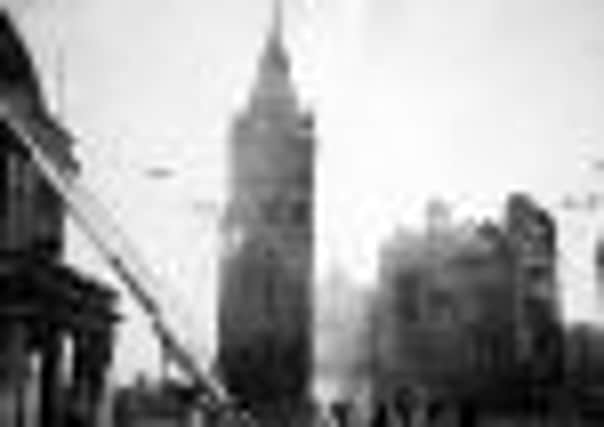Day of remembrance will mark 70 years since city’s Blitz terror


But now civic leaders are hoping its people will come together for a day of remembrance to mark the 70th anniversary of the city’s Blitz.
On Sunday, May 8, a service will be held at Holy Trinity Church, followed by a procession to Queen Victoria Square, where an act of civic commemoration will be held.
Advertisement
Hide AdAdvertisement
Hide AdCity councillor John Robinson, portfolio holder for image and culture, said: “Many people across the city have been thinking that it would be appropriate to mark the 70th anniversary of the heaviest bombing of the city.
“There are still people alive today who remember what happened and it will be a coming together of different parts of the city for a commemorative service at Holy Trinity Church and a community event in Queen Victoria Square.
“We invite everybody in the city who was either involved, had relatives who were, or who simply wants to pay their respects.”
Although the devastation wreaked on cities like London and Coventry seeped into the national psyche, attacks on Hull drew scant attention as it was often referred to as a “north-east town” in radio and newspaper reports of the raids.
Advertisement
Hide AdAdvertisement
Hide AdPerceptions are, however, changing and many historians now believe Hull was more heavily bombed than any other British town or city apart from London. Some even calculate now that per head of population, more bombs fell on Hull than the capital.
However they are presented, the figures are chilling.
More than 1,200 people were killed and more than 3,000 were injured in the 82 bombing raids on Hull during the Second World War. There were also at least three separate machinegun attacks by Luftwaffe planes on the city.
Many bodies were never recovered from the rubble.
A total of 86,715 homes were damaged – 94 per cent of the entire housing stock – and 152,000 people were made homeless, more than half the population.
The heaviest raids were over two nights in May 1941, when 420 people were killed and 350 were seriously injured.
Advertisement
Hide AdAdvertisement
Hide AdA small plaque recording this grim toll stands in the pavement in Queen Victoria Square on the site of the former Prudential tower. The building around it was destroyed.
A photograph showing the aftermath of this raid with smoke swirling in the background became an iconic image of Hull’s war years.
Overnight between Wednesday, May 7, and Thursday, May 8, a total of 72 German aircraft dropped 110 tonnes of high explosives in 311 bombs, as well as 9,648 incendiary bombs.
As so often happened, the bombs were dropped on Hull as the planes flew home over the East Coast because they had been unable to reach their primary target, which in this case was Liverpool.
Advertisement
Hide AdAdvertisement
Hide AdBetween midnight on May 8 and 3.40am on May 9, a total of 120 bombers dropped 157 tonnes of high explosives and a staggering 19,467 incendiaries. The intended target on this occasion had been Sheffield.
As well as being bombed because other targets could not be found or were too well protected, Hull’s docks, industry and railways were in themselves key targets for the Luftwaffe.
Hull was also easily identifiable because of its place on the Humber, and German pilots used Hornsea Mere as a navigational aid on the coast, bringing them in and out over Hull.
City historian Charles Dinsdale said although the experience for residents would have been “absolutely horrendous”, morale remained high because of excellent contingency planning by the local authorities.
Advertisement
Hide AdAdvertisement
Hide AdHe said: “The first thing that would go would be communications, so all the Boy Scouts with their push-bikes would go to set points to take messages from A to B. They also used wireless cars, or megaphones, telling people what to do in the event of (something happening).
“When the all-clear sounded, Sydney Smith (the mayor) made sure there were schools, churches, halls and cafes ready to accept these people coming in once they’d been made homeless.
“He also advised people to have a plan ready so they knew where they could go to stay, like an auntie’s or a grandmother’s, if they were bombed.
“Two hundred houses were also set aside. There was a billeting officer in Hull but his job was very easy. The contingencies in Hull were excellent and were used as a model elsewhere.”